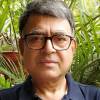

Droughts may affect over three-quarters of the world’s population by 2050. In India, drought prone areas have increased by 57 percent since 1997. Fifty million Indians are affected by drought every year.
According to the United Nations, globally the number and duration of droughts have increased by 29 percent since 2000, as compared to the two previous decades.
Droughts are among the greatest threats to sustainable development worldwide with no country being immune to drought.
2.3 billion people face water stress
More than 2.3 billion people today face water stress and the numbers are likely to grow with more and more areas coming under severe water shortage.
This year, the theme of UN’s International Day Against Desertification, and Drought “Rising up from drought together” emphasizes the need for early action to avoid disastrous consequences for humanity and the planetary ecosystems.
Desertification is the degradation of land in arid, semi-arid, and dry sub-humid areas. It is caused primarily by human activities and climatic variations.
Desertification does not refer to the expansion of existing deserts.
It occurs because dryland ecosystems, which cover over one-third of the world’s land area, are extremely vulnerable to overexploitation and inappropriate land use. Poverty, political instability, deforestation, overgrazing and bad irrigation practices can all undermine the productivity of the land, according to UN.
The World Day to Combat Desertification and Drought is observed every year on June 17, to promote public awareness of international efforts to combat desertification.
When the land degrades and stops being productive, natural spaces deteriorate and transform.
According to the UN, increasing greenhouse gas emissions decreasing biodiversity means there are fewer wild spaces to buffer zoonoses, such as COVID-19, and protect us from extreme weather events.
Drought is already affecting all types of countries, in all types of geographies, negatively impacting global food systems, health, economic and social development, according to the UN.
This “trend is likely to continue” unless we bring about necessary change and invest in solutions. Insufficient rainfall is not the only cause of the drought. There is a lack of awareness about human-induced water scarcity that exacerbates drought risks and effects.
The UN said that by 2050, three-quarters of the world’s population and half of the global grain production will be exposed to severe water scarcity.
UN says ‘Drought is a slow-onset disaster’
Women and indigenous communities will be especially vulnerable during drought.
The UN is interested in raising awareness about various impacts of drought and encourage people to become more drought-ready and resilient.
“Drought is a slow-onset disaster. Preparedness and swift action are needed as soon as it emerges. We want to change mindsets from reactive to proactive when it comes to drought mitigation.”UN said.
UN has come up with an idea of Droughtland, an imaginary country that lives under a dry spell. Campaign materials – cartoons, animations and videos describe everyday challenges of living in Droughtland so that no country becomes a real “drought land”.
India is considered one of the severely drought-prone countries. Nearly two-thirds of the country suffered drought during 2020-2022.
Geographically, India’s drought vulnerability compares with that of sub-Saharan Africa.
The effect of severe droughts was estimated to have reduced India’s gross domestic product by 2-5 percent over the 20 years from 1998-2017, according to a UN report.



